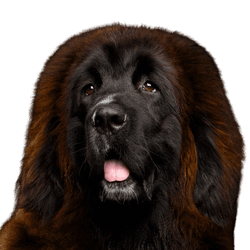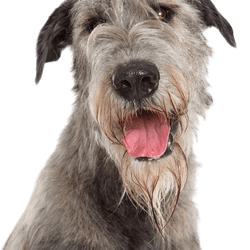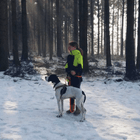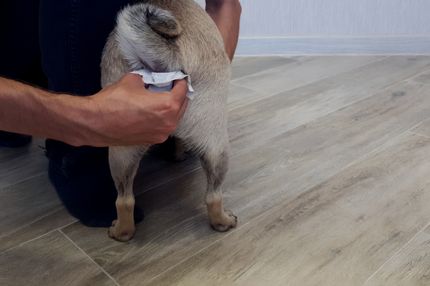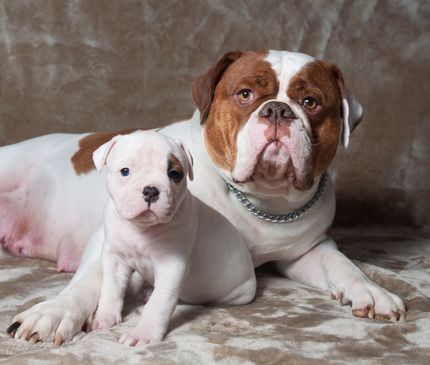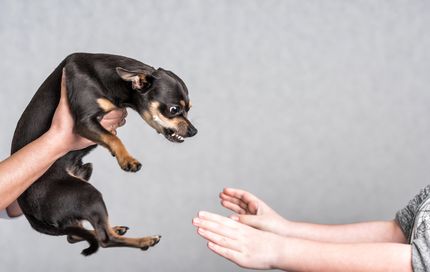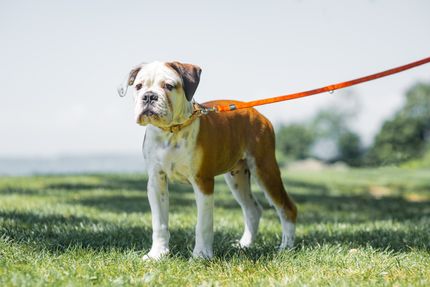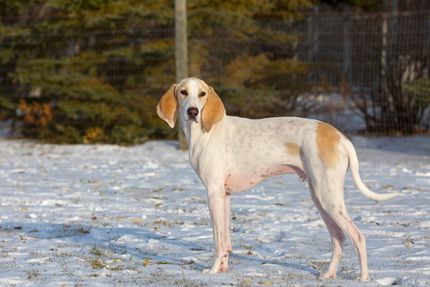Facts & Origin
History and origin
The Tibetan Wolfhound is a mix of the Do Khyi and the Irish Wolfhound. The Do Khyi, also known as the Tibetan Mastiff, has a long history and originated in Tibet where it was bred for guard and protection. The Irish Wolfhound, known for its size and hunting abilities, has its roots in Ireland. This unique cross combines the impressive qualities of both breeds.
Suitability and Husbandry
These crossbreeds make excellent guard and family dogs. Due to their size and activity, they require ample space and exercise. They need continuous activity and mental stimulation to reach their full potential.
Because the Tibetan Wolfhound can reach an imposing size and has special care and training requirements, they may not be suitable for novice dog owners.
| Alternate Name | - |
| Origin | Tibet - Ireland |
| Life expectancy | 6 - 15 years |
| Care requirements | high-maintenance |
| Activity level | average - average to high |
| FCI group | not recognised |
| AKC group | not recognised |
| KC group | not recognised |
More Do Khyi mixes
More Irish Wolfhound mixes
Attitude, character and temperament of the breed
Character and nature of the Tibetan Wolfhound
The Tibetan Wolfhound is known for its balanced and friendly nature. This breed is adaptable and can live both in an apartment and in a house with a garden. They are very friendly and get along well with children and other pets. Perfected by crossing two dog breeds known for their loyalty to their family, the Tibetan Wolfhound is characterized by its loyal and frugal nature.
The Tibetan Wolfhound is not only a loyal companion, but also brings with it a number of positive qualities. Since he was bred from two working dog breeds, he shows a high level of intelligence and performance. Therefore, he needs sufficient physical and mental stimulation.
Husbandry and suitability
Because of his original breeds, it is recommended that the Tibetan Wolfhound be kept in a cooler climate, as he is better suited to these conditions. While he is quite an enjoyable pet, he should not be brought into a household with small children or elderly people due to his size and strength. He is an active and sociable dog who enjoys regular walks and playtime. The Tibetan Wolfhound is a crossbreed with many positive attributes and would be a brilliant addition to any family looking for an active, loyal pet.
Character
Care and health of the Tibetan Wolfhound
The Tibetan Wolfhound 's grooming requirements are quite high due to its dense, double coat. It must be brushed regularly to prevent matting and skin problems.
Health-wise, the mixed breed dog is generally robust. However, it would be important to have regular health checks as both parent breeds are predisposed to certain diseases. These include eye disease, hip dysplasia, and heart problems.
Breeding the Tibetan Wolfhound
Breeding mixed breed dogs like the Tibetan Wolfhound requires both experience and a sense of responsibility. Beyond selecting healthy parents, the welfare of future puppies must also be ensured. Information regarding the potential size, temperament and care requirements of the puppies should be communicated transparently prior to adoption.
What does this mixed breed look like?
This charismatic and loyal four-legged friend is a cross between the Tibetan Mastiff (also known as the Do Khyi) and the Irish Wolfhound, both known for their impressive size and unique blend of strength and grace. In appearance, the Tibetan Wolfhound combines the strength and presence of the Tibetan Mast iff with the height and slender shape of the Irish Wolfhound, and its eyes are often dark and lively, reflecting a deep intelligence and alertness.
The Tibetan Wolfhound's coat is often a mixture of its parents' coat colors, and thus can vary from black, brown, and gray to cream. The coat is long and dense, often forming a mane around the neck area, similar to the Tibetan Mastiff.
| Fur length | long - medium |
| Fur | flat coated - rough-haired |
| Ear shape | Floppy Ear - Triangle |
| Tail | rolled up - short |
| Anatomy | hefty, slim |
| Size ♀ | 61 - 71 cm |
| Weight ♀ | 34 - 54 kg |
| Size ♂ | 66 - 89 cm |
| Weight ♂ | 45 - 73 kg |
| Suitable For | - |
Known Diseases
Gastric torsion
Gastric torsion is a disease in which the stomach rotates around its own longitudinal axis. The cause of the disease is not known.
Bone Cancer
May occur with age.
Heart disease
Can occur frequently in dogs and can sometimes be treated with medication.
Joint problems
Especially due to overweight, joint problems can occur in dogs.
FAQ
-
A Tibetan Wolfhound is a cross between a Do Khyi and an Irish Wolfhound. This hybrid breed is very rare and mixes characteristics of both parent breeds.
-
A Tibetan Wolfhound usually grows larger than a normal Do Khyi and has a long, dense coat. They often have a large build.
-
This mix is friendly, intelligent and loyal. They can also be very stubborn and curious and are generally very attached to their owners.
-
Since this cross has more energy than a normal Do Khyi, it needs a lot of exercise and time to let off steam. They should also be trained and encouraged regularly so that they can develop well mentally and physically.
-
They should be brushed regularly to prevent matting.
